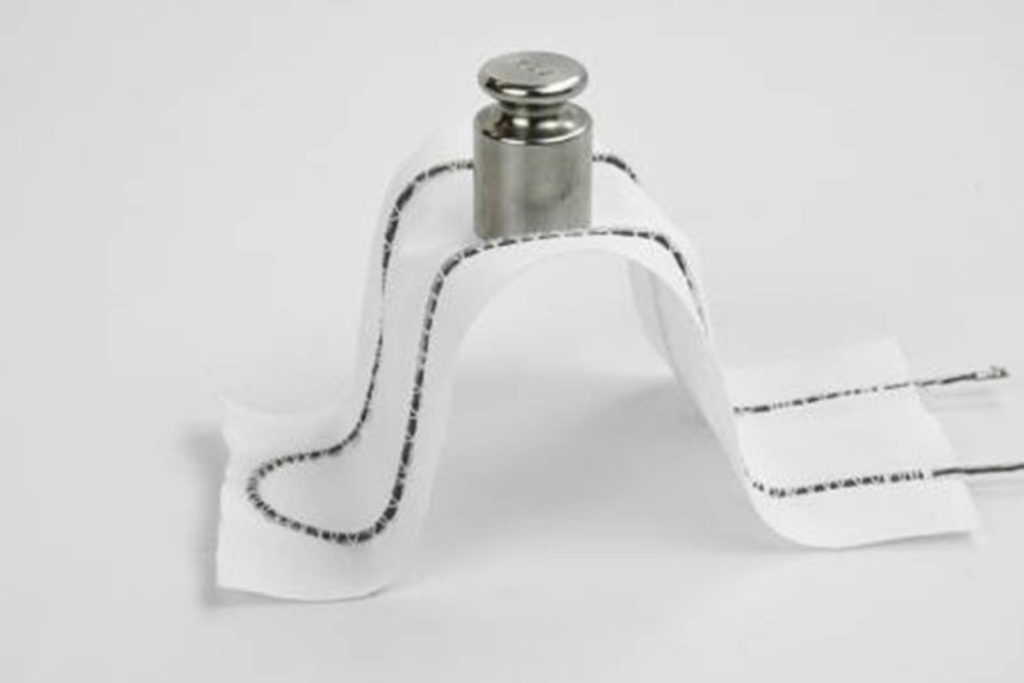
A new robotic fabric structure, developed in the lab of Prof. Rebecca Kramer-Bottiglio at Yale University, could lead to new innovations in adaptive clothing, self-deploying shelters, or lightweight shape-changing machinery. The robotic fabric created by the researchers has actuation, sensing and variable stiffness fibers while retaining the qualities desired in a fabric: flexibility, breathability, small storage footprint, and low weight.
According to information provided by Yale University, the researchers focused on processing functional materials into fiber-form so they could be integrated into fabrics while retaining its advantageous properties. For example, they made variable stiffness fibers out of an epoxy embedded with particles of Field’s metal, an alloy that liquifies at relatively low temperatures. When cool, the particles are solid metal and make the material stiffer; when warm, the particles melt into liquid and make the material softer.
“Our Field’s metal-epoxy composite can become as flexible as latex rubber or as stiff as hard acrylic, over 1,000 times more rigid, just by heating it up or cooling it down,” said Trevor Buckner, a graduate student in Kramer-Bottiglio’s lab and lead author on the paper. “Long fibers of this material can be sewn onto a fabric to give it a supportive skeleton that we can turn on and off.”
These on-demand support fibers allow a robotic fabric to be bent or twisted and then locked into shape, or hold loads that would otherwise collapse a typical fabric.
To make the fabric move, the researchers used shape-memory alloy (SMA) wire, which can return to a programmed shape after being deformed. SMA wire is usually programmed into coils or meshes to generate contracting motion, but this approach was not desirable as it caused the fabric to bunch up unpredictably.
“Instead of using the coil technique, we flattened the wires out into ribbons to give them a geometry much more suited to smooth bending motion, which is perfect for robotic fabrics,” said Buckner.
The project was funded by the Air Force Office of Science Research. The results of their work have been published in Proceedings of the National Academy of Sciences.
 TEXTILES.ORG
TEXTILES.ORG


